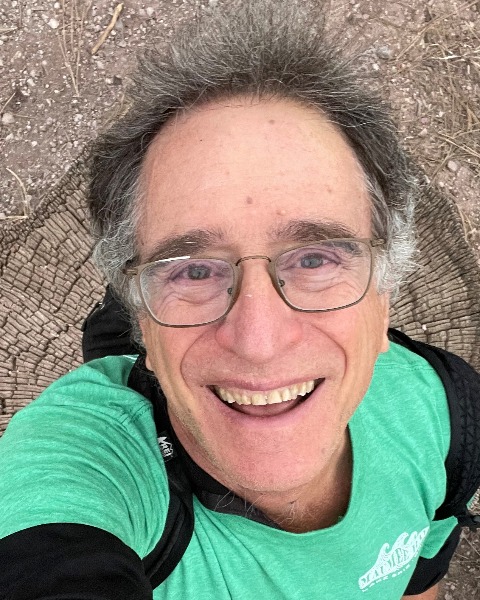Back
Organized Oral Session
Career Track
Session: : Growing an Inclusive 21st Century-Relevant Ecological Society – Celebrating the 30th Anniversary of the WAMIE Report
OOS 39-2 - ESA Ecological Literacy and Undergraduate Ecology Education Initiatives in Response to the WAMIE Report
Wednesday, August 9, 2023
10:15 AM - 10:30 AM PDT
Location: 257

Alan R. Berkowitz, PhD
Head of Education
Cary Institute of Ecosystem Studies
Millbrook, New York, United States- GM
George Middendorf, Ph.D.
Emeritus
Retired
Washington, District of Columbia, United States
Presenting Author(s)
Co-author(s)
The 1993 WAMIE report represented a watershed moment in ESA’s efforts to foster a more diverse membership and advance ecological literacy. The decision to include ESA members with expertise in education was key and based on the recognition that early learning experiences sparked many ecologists’ careers. These educators argued that undergraduate education work done by ESA members contributed not just to training ecologists, but also future teachers and the general public, crucial steps to recruit students from underrepresented groups to the field.
This paper highlights this evolution, identifies themes and tensions that emerged, and points to remaining challenges. ESA’s contributions to advancing ecological literacy included occasional meeting symposia, papers by individuals and projects such as Schoolyard Ecology for Elementary School Teachers (SYEFEST), all of which engaged ESA members in innovative work with diverse audiences. The Vice President’s Survey of Ecological Literacy (2007), highlighting the importance of the human dimension provided an important foundation for the Four Dimensional Framework for Ecology Education (4DEE) adopted by the Governing Board in 2018. Activities to support excellence in undergraduate ecology education included: a proliferation of activities at annual meetings, including workshops, special sessions, multiple contributed paper sessions, symposia; the dissemination of educational resources (TIEE, EcoEd DL); innovative professional development programs (e.g., SEEDS phase 1, FIRST); and a variety of publications, from the ESA Bulletin to a teaching series in FEE and Ebert-May and Hodder’s 2008 book. ESA now hosts a teaching-oriented conference (LDC), water cooler chats, and several Faculty Mentoring Networks. ESA grew from having no education staff and a single education-oriented section to an exceptional professional staff and an impressive diversity of sections that address a wide range of education and diversity interests. Yet, challenges remain: 1) Despite the wonderful evolution of academic positions that embrace the scholarship of teaching (DBERs), education remains persistently undervalued in many places. 2) Although ecology features prominently in many other disciplines and their teaching, the quality and substance is hard to gauge. 3) While ecology is included in broader efforts to support biological, environmental or science literacy writ large, it is often still ‘lost’ or diluted in application. 4) The privileged position of health-related sub-disciplines of biology in many institutions and by many prospective students, challenges our efforts to sustain its place in the curriculum, to engage new faces in our field, and to realistically and meaningfully recognize the role of ecology on human and planetary health.
This paper highlights this evolution, identifies themes and tensions that emerged, and points to remaining challenges. ESA’s contributions to advancing ecological literacy included occasional meeting symposia, papers by individuals and projects such as Schoolyard Ecology for Elementary School Teachers (SYEFEST), all of which engaged ESA members in innovative work with diverse audiences. The Vice President’s Survey of Ecological Literacy (2007), highlighting the importance of the human dimension provided an important foundation for the Four Dimensional Framework for Ecology Education (4DEE) adopted by the Governing Board in 2018. Activities to support excellence in undergraduate ecology education included: a proliferation of activities at annual meetings, including workshops, special sessions, multiple contributed paper sessions, symposia; the dissemination of educational resources (TIEE, EcoEd DL); innovative professional development programs (e.g., SEEDS phase 1, FIRST); and a variety of publications, from the ESA Bulletin to a teaching series in FEE and Ebert-May and Hodder’s 2008 book. ESA now hosts a teaching-oriented conference (LDC), water cooler chats, and several Faculty Mentoring Networks. ESA grew from having no education staff and a single education-oriented section to an exceptional professional staff and an impressive diversity of sections that address a wide range of education and diversity interests. Yet, challenges remain: 1) Despite the wonderful evolution of academic positions that embrace the scholarship of teaching (DBERs), education remains persistently undervalued in many places. 2) Although ecology features prominently in many other disciplines and their teaching, the quality and substance is hard to gauge. 3) While ecology is included in broader efforts to support biological, environmental or science literacy writ large, it is often still ‘lost’ or diluted in application. 4) The privileged position of health-related sub-disciplines of biology in many institutions and by many prospective students, challenges our efforts to sustain its place in the curriculum, to engage new faces in our field, and to realistically and meaningfully recognize the role of ecology on human and planetary health.
